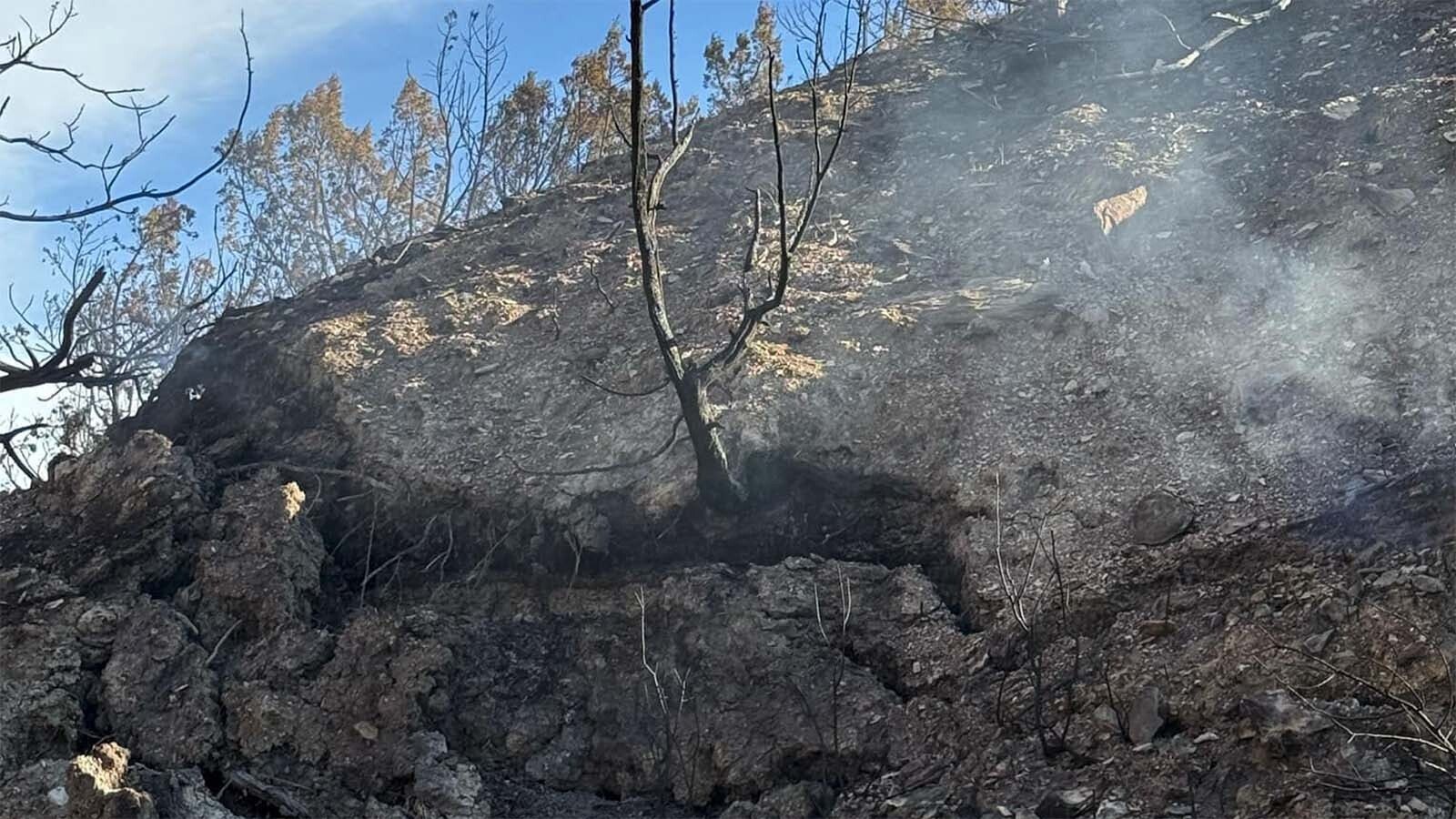Colorado will re-release at least four of a pack of six wolves that was captured and placed in captivity after numerous sheep and cattle were killed, probably by one of the pack leaders.
That pack leader, an adult male, died in captivity, Colorado Parks and Wildlife (CPW) officials said Monday.
The other pack leader, a female, and her four pups are still alive and being held at an undisclosed location, CPW Jeff Davis said during a press conference Monday.
The pups are about 4-and-a-half months old. Once they reach “adult size,” CPW plans to re-release them, Davis said. He did not give any details as to exactly when or where that might be.
The female might also be re-released and closely monitored, he added.
Livestock Killing Prompted Capture
It is thought that the lead male was responsible for most, if not all, of the attacks on sheep and cattle in Colorado’s Middle Park region, which prompted CPW to capture the pack.
Davis wouldn’t disclose any further details about the location and size of the facility where the wolves are being kept and fed road-killed big game carcasses.
The facility’s location is being kept secret to protect the wolves, as well as the privacy of the property’s owners, Davis said.
CPW began capturing the wolves and moving them into captivity Aug. 27, and the operation was completed Sunday.
The wolves are known as the Copper Creek pack, and their pups were the first born from 10 wolves that were captured in Oregon and released in Colorado in December 2023.
Colorado outdoorsman Mike Usalavage caught video of three of the pups last month, looking healthy and lively.
Alpha Male Dies
The wolf that died had numerous injuries to one of his legs when he was captured, but it wasn’t clear whether those caused his death, Davis said.
The wolf wasn’t hurt during capture, and the injuries didn’t appear to be otherwise “human caused,” he added.
According to experts, wolves usually live about only three to four years in the wild, and the most common causes of injury or death are being stomped or kicked by large prey animals or fighting with other wolves.
It also wasn’t clear whether the wolf’s injuries had been suffered that way, said CPW Wolf Conservation Program Manager Eric Odell said.
“It does not look as though it was a kick injury from an ungulate,” he said, adding that the injuries could have come from “another carnivore-type animal.”
The wolf’s injuries were treated and it was given antibiotics, as well as a new tracking collar, Davis said.
However, a few days later in the holding facility, the collar gave off a “mortality signal” and the wolf was found dead, he said.
A necropsy will be preformed on the wolf’s carcass to determine the exact cause of death, Davis said.
Second Wolf Death So Far
The Copper Creek pack alpha male was the second reintroduced wolf to die in Colorado. This spring, another male wolf was found dead, and it was later determined that it had been killed by a mountain lion.
With the Copper Creek female and pups in captivity, that leaves nine known wolves roaming free in Colorado.
That includes the surviving seven reintroduced wolves two remaining wolves from the North Park pack. That pack was formed in 2019-2020 by wolves that migrated into Colorado on their own from Wyoming.
Colorado resident and wolf-watcher John Michael Williams said that although he opposes that state’s wolf reintroduction, he was upset to hear about how the Copper Creek pack leader died.
“I don’t like to see any animals suffer that way,” he told Cowboy State Daily.
Timing Had To Be Right
Regarding the timing of capturing the pack, Davis said CPW avoided doing it too early or too late.
It’s evident that the male wolf was providing all of the pack’s food while the female was caring for the pups, and removing him too early would have jeopardized the entire pack’s survival, he said.
“Non-lethal” wolf deterrents, such as lights and loud noises, had curbed the killing of sheep and cattle this spring and early summer, but then the attacks on livestock started picking up again. So, CPW deiced to capture the pack, Davis said.
September is also about the time that “pups start going out on hunts” and CPW didn’t want them to equate hunting with killing sheep and cattle.
CPW’s Image Suffers
Many Coloradans, both pro- and anti-wolf, are disappointed by how things have gone with the reintroduction, Williams said.
He runs the popular Colorado Wolf Tracker social media site and has a network of contacts among ranchers and others around the state.
Even some pro-wolf people are starting to say “this isn’t what we wanted. This isn’t what we voted for” in response to the wolves being captured and put in captivity, he said.
The wolf reintroduction was authorized by Colorado’s Proposition 114. It barely squeaked by voters Nov. 3, 2020, by a margin of 50.91% to 49.09%.
CPW’s public image seems to be suffering, he added.
“What’s happened now is not what was predicted and not what was promised,” he said. “It’s an embarrassing failure of humans, of arrogant humans, trying to manipulate nature in a way it was never intended to be.”
Mark Heinz can be reached at mark@cowboystatedaily.com.





